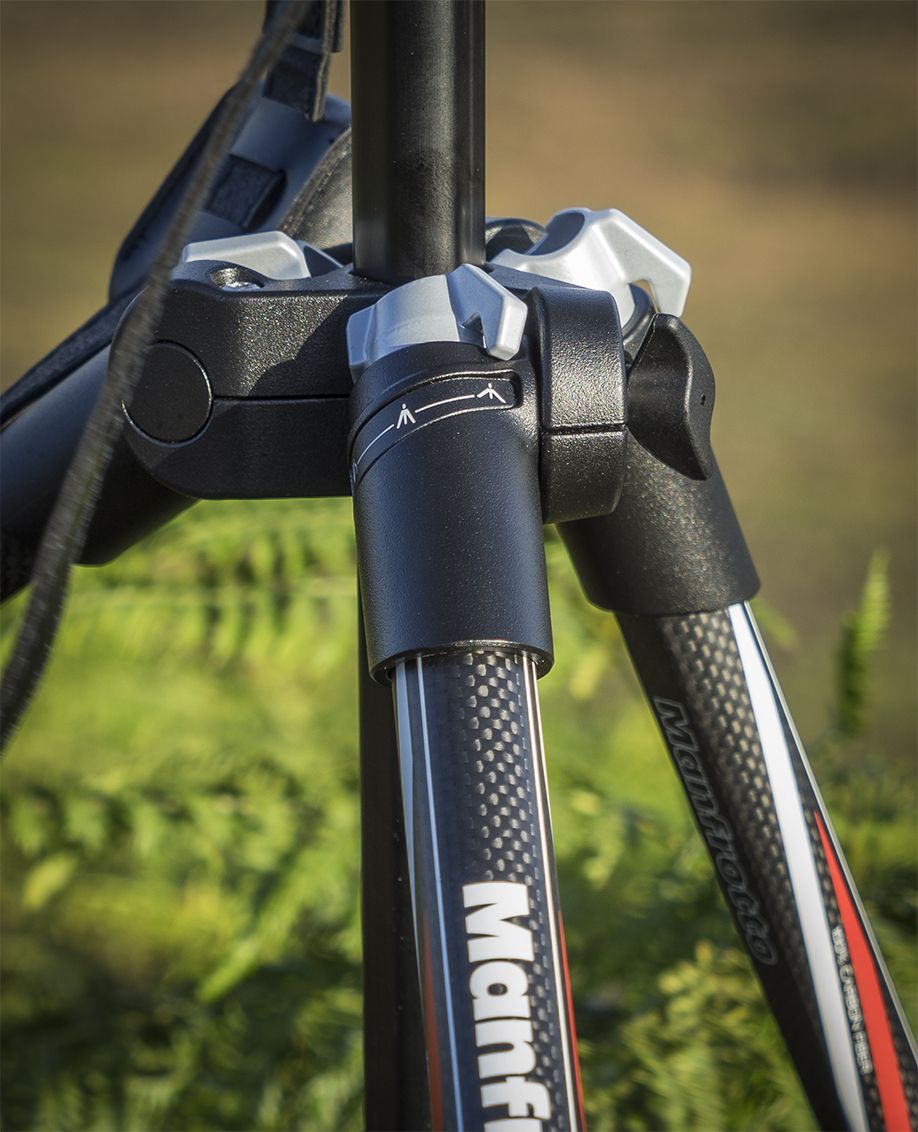Being a keen walker and cyclist that likes to get off the beaten track, I’ve been in the market for a quality, compact, lightweight tripod for the past few months. I wanted something for those days when I felt like going that little bit further into the outdoors. Whatever outdoor pursuit takes your fancy, most people will tell you that lightweight kit is the way forward; mountain bikes, road bikes, rucksacks, clothing, footwear and so on. It’s probably quite obvious why we prefer lightweight equipment for such activities, you’re basically carrying less weight, which leaves you with more energy to go further, for longer and / or to make the journey more enjoyable. This ethos also extends to my current choice of cameras, which are lightweight systems, such as the Mirrorless Sony A7 series and Sigma’s DP Quattro.
I was very pleased to receive the Manfrotto Befree carbon tripod, the first thing that I noticed having unwrapped it, was how light it is, 1.1Kg (2.4lbs), additional to the weight, what struck me is the build quality, and if I’m honest, its good looks, it is aesthetically very pleasing to eye! Maybe I’m carbon biased and that’s just my inner geek speaking, but who says looks aren’t important? I will of course put looks aside with giving honest opinion of how this tripod performs.
I’d decided to give this tripod a thorough test during a few days in the North York Moors National Park, North Yorkshire, UK. It’s just an hour’s drive away from me and I know it very well, with my first visit being when I was three weeks old, not that I did much hiking on that occasion. The North York Moors is an expansive and unique landscape, formed by glaciers many thousands of years ago. It has a varied landscape of upland moorland, winding valleys, forests and a stunning coastline.
The Befree has a folded length of just 40cm and although it comes with a very nice carry case, I’d opted to carry it slotted into the side of my Manfrotto Offroad Hiker backpack, I barely noticed I was carrying it such is the light weight of the tripod, just what I’d wanted for making those long hikes more enjoyable.
Unfolding the legs uses a locking system with a three position rotating latch – folded, normal angle, and splayed wide. When locked into these positions, it prevents the legs from moving any further, and is very simple to use once you have the hang of positioning the switches with the legs angled correctly. The tripod legs are four-section 100% carbon fiber, the three switches on each leg that lock them into position can all be flipped out with one hand, making the tripod very quick to set up. The Befree uses a small but sturdy ball-head and a single plastic knob, which adjusts friction and tightens the head.
Over the course of a couple of days out on the Moors I encountered three seasons, bearing in mind that it is mid-summer here in the UK. However, this is nothing unusual for this area which seems to have its own micro-climate, hot sun, rain, mist and wind, it can be difficult knowing what to wear at times in Yorkshire! This does however mean that kit is tested quite rigorously.
Fully extended the height of this tripod is way below my eye level (I’m 6’1”), sitting around chest height, this isn’t a problem for me as I don’t often use a tripod any higher than this, though thought it noteworthy. The lowest section leg is quite spindly and this gives the tripod a bit of a ‘wobble’ when man-handling it into position out in the hills on rough ground and on river banks etc. However, once in position the stiffness of carbon is used to great effect, and so long as it’s not too windy the tripod is rigid enough to restore confidence.
In conclusion, I am happy to recommend the Befree carbon tripod and I see it accompanying me on many trips. I must however point out that a tripod such as this will always be a compromise, this being that the trade off in weight and mass means that it will never be a replacement for your main tripod. As a professional landscape photographer we generally prefer to choose the most sturdy tripods available. Additionally, although this tripod can handle full size DSLR cameras, it is definitely more suited to the more compact systems and can feel a little bit unbalanced with heavier cameras and big lenses.
For me, it does fill a gap in my kit list which has been vacant for a while. This being a quality lightweight tripod that I can take anywhere. As mentioned previously, it is perfect for taking along on all manner of outdoor activities. As a travel tripod, it performs admirably, it is quick to set up and you’ll hardly notice that it’s with you with that low weight.
Karl Holtby
A photographer with a particular interest in the natural world, landscapes and fine art photography. With a background in conservation, it is the ecological detail that intrigues and is equally important as the stunning vistas, along with the depiction of man’s influence on the landscape that captures his imagination. Images will often be composed of abstract form in the landscape, with the aim of evoking emotion and capturing the ambiance of the location. Karl has exhibited widely, most notably at the Joe Cornish Galleries. Recently, Karl has been testing camera equipment for a major camera manufacturer. Karl has spent time on the Isle of Skye testing their cameras and lenses in tough mountain conditions.










